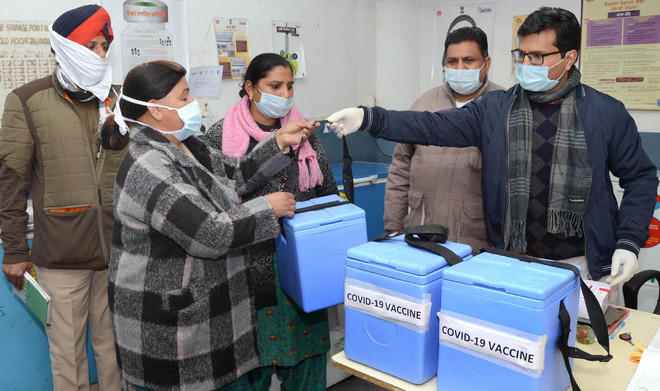Summary
India’s vaccine diplomacy has been driven by its robust domestic production capacity. The initiative was derailed by the second wave of COVID-19 infections that hit the country in mid-2021. Its efforts to redouble vaccine exports could hinge on the import of existing global mRNA vaccines and the development of domestic mRNA vaccines.
As the COVID-19 pandemic brought the world to a standstill, countries raced to develop vaccines to stem the virus’ spread. Vaccine developing countries quickly sought to develop and, if possible, export vaccines to decrease virus transmission and advance their geopolitical objectives. Western pharmaceutical giants like Pfizer, Moderna and Johnson & Johnson, alongside the Chinese Sinovac and Russian Sputnik, are exporting doses to countries around the world to provide a targeted remedy to rising cases, court political favour and increase their influence. India too has emerged as a key global vaccine supplier, but its vaccine diplomacy has hinged on its domestic handling of the virus which has created challenges to sustain the ambitious effort.
India’s vaccine production capacity has supported its vaccine diplomacy. Since early 2020, India has exported 65 million vaccine doses worldwide primarily to countries within South Asia, the Middle East and Africa. The Serum Institute of India is the main manufacturer of the AstraZeneca Covishield Vaccine, which is the second most-used COVID-19 vaccine worldwide. Bharat Biotech’s Covaxin vaccine has emerged as a viable option with a 77.8 percent efficacy rate compared to Covishield’s 70 per cent efficacy rate. New Delhi, in turn, has shipped nearly 20 million Covaxin doses. Consequently, developing countries that lack vaccine development capacities have heavily relied on India to produce and export millions of doses. However, the second wave of COVID-19 infections in May 2021 caused the Indian government to cease vaccine exports and instead use the existing supplies to inoculate the Indian population. The emergence and severity of the second wave significantly hampered India’s vaccine diplomacy initiative, allowing other suppliers like China and Russia to export their vaccines, irrespective of their efficacy, across South and Southeast Asia.
Yet, despite India’s successes in producing, administering and shipping vaccines abroad, questions revolve around how and whether Indian pharma and scientists can develop mRNA vaccines to target current and future COVID-19 variants. mRNA vaccines appear more effective against rising and future COVID-19 variants. These vaccines induce protein production within the cells, which triggers an immune response against viruses like COVID-19 that mimics the virus’ structure. The immune cells are then programmed to recognise the spike protein as a foreign and malicious virus, which triggers an immune response that protects us in case of potential exposure. Unlike traditional vaccines, mRNA vaccines do not require a weakened or inactive form of the virus to enter our bodies. This means that inoculation can occur without individuals being exposed to the virus itself. The mRNA vaccine technology is not exclusive to COVID-19; it can be applied to other viral diseases like Influenza and Zika.
With significant investment from the American government, Moderna and Pfizer developed and distributed mRNA vaccines across the world. Until now, Russia, the United Kingdom and China have opted to develop traditional vector-based DNA vaccines but are now moving to develop mRNA vaccines. However, the waning efficacy of Sinovac and Sinopharm against the Lambda and Delta variants has renewed pressures on Beijing and Chinese companies to develop effective mRNA vaccines. Russia has not revealed plans to develop an mRNA vaccine; instead, it has opted to double down on its Sputnik V vaccine candidate by slashing prices. Fears of current and future COVID-19 variants and the potential arrival of another Coronavirus has sensitised these countries to kickstart or import mRNA vaccine production capabilities.
India has begun development of its own mRNA vaccines to supplement Covaxin and Covershield. Indian pharmaceutical manufacturer, Gennova, has begun human trials of its COVID-19 mRNA vaccine candidate with aims to clear regulatory hurdles to distribute the vaccine across India. Gennova has gained approval from the Drug Controller General of India for Phase 1 and 2 studies and is now seeking emergency approval for its Phase 3 study, which would allow the company to roll out mRNA vaccines while waiting for results. The Chief Executive Officer of Emcure Pharma, parent company of Gennova, claims that Gennova could supply 60 million doses of its mRNA Vaccine by the end of 2021. In addition, Gennova is not the only company developing COVID-19 mRNA vaccines in India. Ignite LSF has funded scientists at the Indian Institute of Science to develop mRNA vaccines to tackle COVID-19 and future vector-based pandemics.
Recently, the Indian government announced that it will restart vaccine exports in 2022 once India’s 900 million adult population are vaccinated. Whether or not that goal is met, it is likely India will have sufficient domestic and foreign jabs to fulfill domestic inoculation targets. Delhi is now negotiating with Pfizer and Moderna to import their mRNA vaccines once legal indemnity clauses are sorted out even though Indian officials will continue to rely heavily on indigenous vaccines. New Delhi’s 2022 vaccine pledge is music to the ears of World Health Organization’s COVAX initiative that has struggled to disburse vaccines given India’s absence and to developing countries that have little alternative when trying to procure viable vaccines, mRNA or not.
. . . . .
Mr Sidarth Ganpati was a Research Intern at the Institute of South Asian Studies (ISAS), an autonomous research institute at the National University of Singapore (NUS). He can be contacted at sidarthrganpati@gmail.com. Dr Karthik Nachiappan is a Research Fellow at the same institute. He can be contacted at isaskn@nus.edu.sg. The authors bear full responsibility for the facts cited and opinions expressed in this paper.
Photo credit: Wikimedia Commons.
-
 More From :
More From :
-
 Tags :
Tags :
-
 Download PDF
Download PDF


